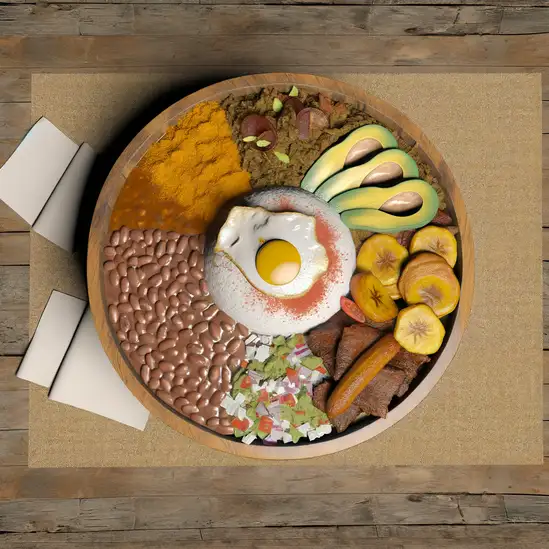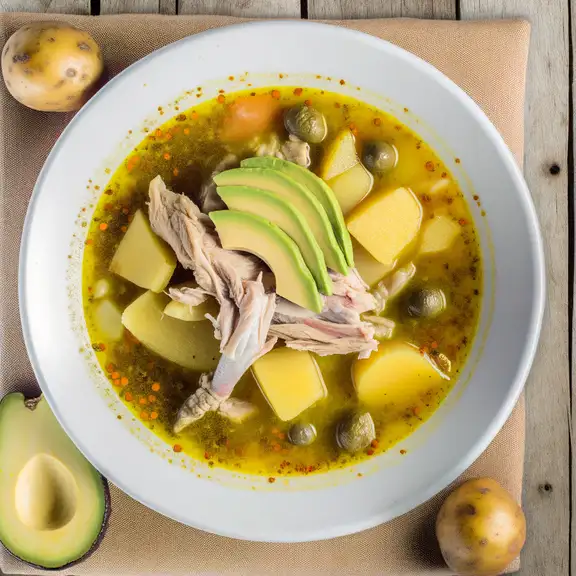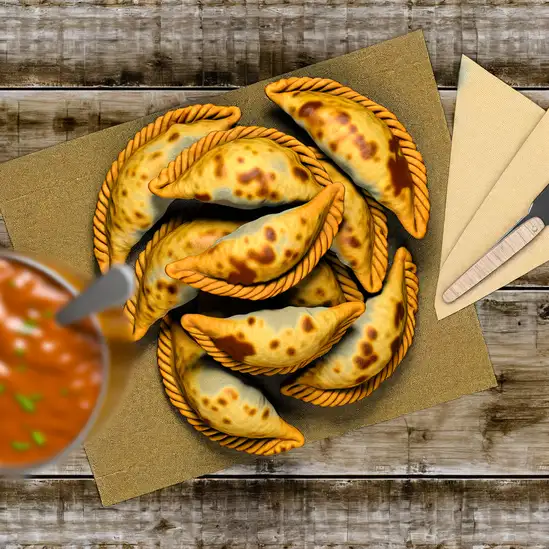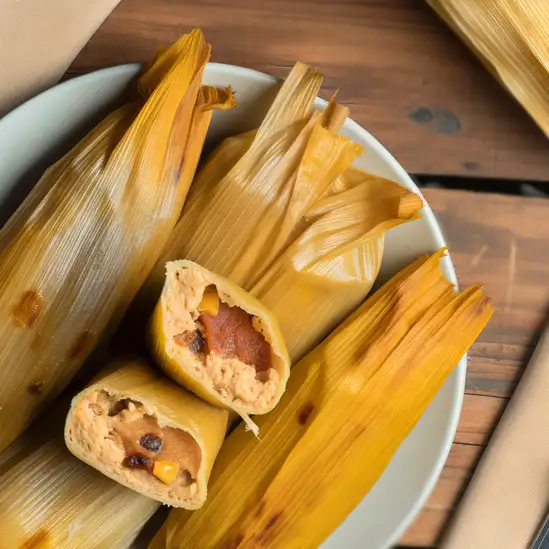



If you ever find yourself craving a place where time seems to slow down and the air carries a gentle whisper of history,Villa de Leyva is that kind of town. Walking through its cobblestone streets feels like stepping into a living postcard—whitewashed colonial buildings with bright blue doors and flower-filled balconies surround a vast,sun-drenched plaza that’s perfect for people-watching or just soaking in the calm. There’s a peaceful rhythm here,punctuated by the distant clatter of horse hooves and the soft murmur of locals chatting over coffee. The scent of fresh bread and roasted coffee drifts from cozy cafés,inviting you to linger over a cup while watching artisans set up their colorful stalls. The town’s character is deeply rooted in its colonial past,but it’s alive with a youthful energy thanks to the artists,musicians,and travelers who gather here. You’ll find yourself drawn to the small museums and galleries tucked away in quiet corners,each telling stories of the region’s rich culture and natural beauty. What really makes Villa de Leyva unforgettable is how it balances tranquility with adventure. Just beyond the plaza,you can explore dramatic landscapes—rolling hills,ancient fossils embedded in stone,and cactus-studded valleys that glow golden at sunset. Whether you’re savoring a plate of hearty bandeja paisa or simply sitting on a bench watching the world go by,Villa de Leyva wraps you in a warm,timeless embrace that stays with you long after you leave.
The information on this page is currently being reviewed by Tripkliq and should be used as a guide only
Eng word: Hello
Eng pronunciation: OH-lah
Local language: Hola
Eng word: Goodbye
Eng pronunciation: ah-DYOS
Local language: Adiós
Eng word: Thank you
Eng pronunciation: GRAH-syahs
Local language: Gracias
Eng word: How much
Eng pronunciation: KWAN-toh KWEH-stah
Local language: ¿Cuánto cuesta?
Eng word: Toilet
Eng pronunciation: BAH-nyoh
Local language: Baño
Eng word: Help me
Eng pronunciation: ah-YOO-dah-meh
Local language: Ayúdame
Eng word: Yes
Eng pronunciation: SEE
Local language: Sí
Eng word: No
Eng pronunciation: NO
Local language: No
Eng word: Excuse me
Eng pronunciation: pehr-DOHN
Local language: Perdón
Villa de Leyva was founded on June 12,1572, by Captain Hernán Suárez de Villalobos under the orders of the Spanish Crown. It was established as a retreat for military officers, clergy, and nobility.
The town is renowned for its well-preserved colonial architecture. The whitewashed buildings, cobblestone streets, and large central plaza make it a picturesque example of Spanish colonial urban planning.
Villa de Leyva boasts one of the largest town squares in South America, the Plaza Mayor. This expansive plaza is surrounded by historic buildings and is a central hub for cultural events and festivals.
Known as the 'largest piece of pottery in the world,' Casa Terracota is a unique architectural marvel made entirely of clay. It was designed by architect Octavio Mendoza and serves as a symbol of sustainable living.
Villa de Leyva is a hotspot for paleontological discoveries. The area is rich in fossils, including those of marine reptiles like the Kronosaurus, dating back to the Cretaceous period.
The Museo del Carmen is a religious art museum housed in a former Carmelite convent. It features a collection of colonial religious artifacts, paintings, and sculptures.
The Muisca people, indigenous to the region, built an astronomical observatory known as El Infiernito. This site features stone monoliths that were used to track celestial events and agricultural cycles.
Villa de Leyva played a role in Colombia's fight for independence. The town hosted the First Congress of the United Provinces of New Granada in 1812, which was a significant step towards independence from Spanish rule.
Every December, Villa de Leyva hosts the Festival of Lights (Festival de Luces), where the town is illuminated with thousands of candles and fireworks, creating a magical atmosphere that attracts visitors from all over.
In Villa de Leyva, the most common Power Adaptor is Type A, Type B.



A generous platter featuring rice, beans, ground meat, chicharrón (fried pork belly), plantains, avocado, and a fried egg, showcasing the rich culinary heritage of Colombia.

A traditional stew made with various meats, plantains, yuca, and corn, simmered to create a comforting and flavorful dish, often enjoyed on special occasions.

Cornmeal cakes that can be grilled, baked, or fried, often filled or topped with cheese, meats, or avocado, making them a versatile staple in Colombian cuisine.

A hearty chicken and potato soup, often served with avocado, capers, and cream, reflecting the traditional flavors of the Andean region.

Fried or baked pastries filled with a variety of ingredients such as beef, chicken, or cheese, commonly served with aji (a spicy sauce) for dipping.

Corn dough filled with meats, vegetables, and spices, wrapped in banana leaves and steamed, offering a delicious and traditional Colombian comfort food.

A slow-cooked beef dish marinated in a rich sauce made from cola, spices, and other ingredients, resulting in a tender and flavorful meal.
Cartagena de Indias feels like stepping into a vibrant,sun-soaked painting where every corner bursts with color and life. The moment you wander through its cobblestone streets,you’re wrapped in the warm embrace of colonial charm mixed with Caribbean energy. Brightly painted balconies overflow with bougainvillea,and the salty breeze carries the distant rhythm of cumbia and salsa,inviting you to move with the city’s heartbeat. It’s a place where history isn’t just in museums—it’s alive in the laughter spilling from open-air cafes and the clinking of glasses filled with tangy,refreshing aguardiente.
As you stroll along the ancient city walls,the scent of grilled seafood mingles with tropical fruit from street vendors,tempting your taste buds to dive into fresh ceviche or a juicy mango. The sun sets in a blaze of orange and pink over the bay,and the city lights flicker on,casting a golden glow that makes every evening feel magical. Locals greet you with genuine warmth,eager to share stories about Cartagena’s rich past and vibrant present.
What makes Cartagena truly unforgettable is its blend of old-world romance and lively modern spirit. From the bustling plazas where artists display their work to the quiet corners where you can sip a cold cocktail and watch the world go by,the city invites you to slow down and savor every moment. It’s a place that stays with you long after you leave,whispering promises of return.
Imagine stepping into a place where the Caribbean sun wraps you in a warm embrace,and the air carries the salty tang of the sea mixed with the sweet scent of tropical fruit. That’s Santa Marta for you—a city that feels alive with a laid-back rhythm,where the past and present dance together effortlessly. Walking through its colorful streets,you’ll hear the lively chatter of locals,the distant strum of a guitar,and the occasional call of street vendors selling fresh arepas or juicy mangoes. It’s a place where time slows down just enough for you to savor every moment.
Santa Marta’s charm lies in its blend of natural beauty and rich culture. The city sits at the edge of the Sierra Nevada mountains,so you can watch the lush green peaks rise dramatically against the bright blue sky. The nearby beaches invite you to dip your toes in warm,crystal-clear waters or lounge under swaying palms while the ocean breeze cools your skin. But beyond the scenery,it’s the people who make Santa Marta unforgettable—their warmth,their stories,and the vibrant festivals that fill the streets with music and color.
If you’re craving a taste of authentic Colombian life,Santa Marta offers it in every bite of freshly caught seafood,every smile exchanged in the plaza,and every sunset that paints the sky in shades of pink and gold. It’s a city that invites you to slow down,breathe deeply,and fall in love with its easygoing spirit.
A tropical island city in the Caribbean Sea,famous for its white-sand beaches,turquoise waters,and vibrant marine life,making it a paradise for snorkeling and diving.
ExploreIf you ever find yourself craving a place where energy hums in the air and every street corner bursts with color,Barranquilla is that kind of city. It’s like stepping into a lively painting where the rhythm of cumbia and salsa pulses through the warm Caribbean breeze. The vibe here is unapologetically joyful—people laugh loudly,dance freely,and welcome you with open arms,making you feel like you’ve stumbled into a big,vibrant family gathering.
Walking through Barranquilla,your senses come alive. You’ll catch the scent of fresh arepas sizzling on street grills,mingling with the salty tang of the nearby Magdalena River. Bright murals splash across walls,telling stories of the city’s rich Afro-Caribbean heritage and its famous Carnival,which is nothing short of a spectacular explosion of costumes,music,and dance. The chatter of vendors,the clinking of glasses filled with chilled aguardiente,and the distant beat of drums create a soundtrack that’s impossible to ignore.
What makes Barranquilla truly special is its spirit of celebration and resilience. It’s a city that wears its history proudly but looks forward with a contagious optimism. Whether you’re wandering through the bustling Mercado de Bazurto or catching a sunset over the river,you’ll feel the heartbeat of a place that’s alive,warm,and endlessly inviting. Trust me,once you’ve experienced Barranquilla,its vibrant soul stays with you long after you leave.
If you ever find yourself dreaming of a place where the energy feels alive but never overwhelming,Medellín is that rare city that wraps you in a warm,vibrant hug the moment you arrive. Nestled in a lush valley surrounded by emerald mountains,the air carries a fresh,earthy scent mixed with the sweet aroma of blooming flowers and the distant hum of salsa music drifting from open windows. Walking through its neighborhoods,you’ll notice how the city pulses with life—colorful street art splashes across walls,and locals chat animatedly over cups of rich,dark coffee that tastes like a little piece of heaven.
What really makes Medellín special is its spirit of transformation and resilience. The people here are incredibly welcoming,always ready with a smile or a story about their city’s journey from its past to the vibrant cultural hub it is today. You can feel this optimism in the lively plazas where artists perform,in the bustling markets filled with fresh tropical fruits,and in the innovative cable cars that whisk you up the hills,offering breathtaking views of the sprawling city below.
Don’t miss the chance to savor bandeja paisa,a hearty local dish that’s as bold and comforting as Medellín itself. Whether you’re wandering through the trendy El Poblado district or exploring the historic charm of Laureles,the city invites you to slow down,soak in its rhythms,and discover a place that’s as warm and dynamic as the people who call it home.
Colombia's capital city offers a mix of history,culture,and modern attractions,and serves as a hub for exploring nearby destinations like the Salt Cathedral of Zipaquirá and Lake Guatavita.
ExploreTourists may be sold mass-produced or fake handicrafts marketed as authentic, locally-made artisanal products.
Tourists exchanging money at unofficial locations may receive counterfeit bills or be given an unfavorable exchange rate.
Scammers may pose as parking attendants, charging tourists for parking in free or public spaces.
Unlicensed individuals may pose as official tour guides and offer subpar or inaccurate tours, often charging high fees.
Some restaurants may inflate prices or add hidden charges to the bill when they notice tourists are unfamiliar with local pricing.
Some tour operators or guides may charge tourists significantly higher prices for tours, horseback riding, or other activities compared to locals or the standard rates.
In crowded areas like markets or festivals, tourists may become targets for pickpockets or bag snatchers.
Unregistered or informal taxi drivers may charge excessive fares, especially for short distances or trips to popular tourist spots.
The possession, use, and trafficking of illegal drugs are strictly prohibited in Colombia, including Villa de Leyva. Colombia has stringent drug laws, and violations can result in severe penalties, including imprisonment. Tourists should avoid any involvement with illegal drugs to ensure their safety and compliance with local laws.
In Villa de Leyva, as in the rest of Colombia, smoking is regulated by national laws. Smoking is prohibited in enclosed public spaces, including restaurants, bars, and public transportation. There are designated smoking areas where smoking is allowed. Tourists should look for these designated areas to avoid fines.
Vaping is subject to similar regulations as smoking in Colombia. It is prohibited in enclosed public spaces and public transportation. Tourists should use designated smoking areas for vaping as well. It is advisable to be discreet and respectful of local customs and regulations.
What are other people saying about Villa de Leyva?
Recent Social posts about Villa de Leyva
There is nothing to show you for now.